Somnath Series: How a decision to replace ruined old Somnath temple with a new grand one arrived at
October 03, 2017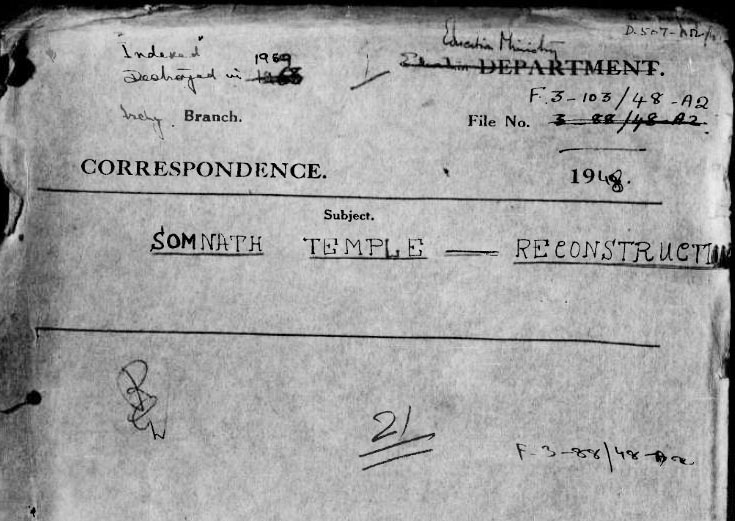
Somnath Series by Japan K Pathak
 In this series, I intend to cater various articles on Somnath temple, covering the period between its last destruction and final reconstruction. To clear any doubts or to obtain more details, you can reach me at my email address japanpathak [at] deshgujarat [dot] com.
In this series, I intend to cater various articles on Somnath temple, covering the period between its last destruction and final reconstruction. To clear any doubts or to obtain more details, you can reach me at my email address japanpathak [at] deshgujarat [dot] com.
In the previous article which was the fourth article in this series you read how Mahatma Gandhi favored the restoration of old Somnath temple which was in ruins. Gandhiji however objected any possibility of govt fund utilization for this purpose. Gandhi’s idea of secularism was different then Jawaharlal Nehru who was against the idea of restoration of Somnath temple itself. Today’s article which is the fifth in this series throws light on some documents available at National Archives that provide us interesting details on communication in government files over Somnath restoration project mostly in 1948/49.
Reconstruct the Somnath temple on another site, presses Junagadh Administrator
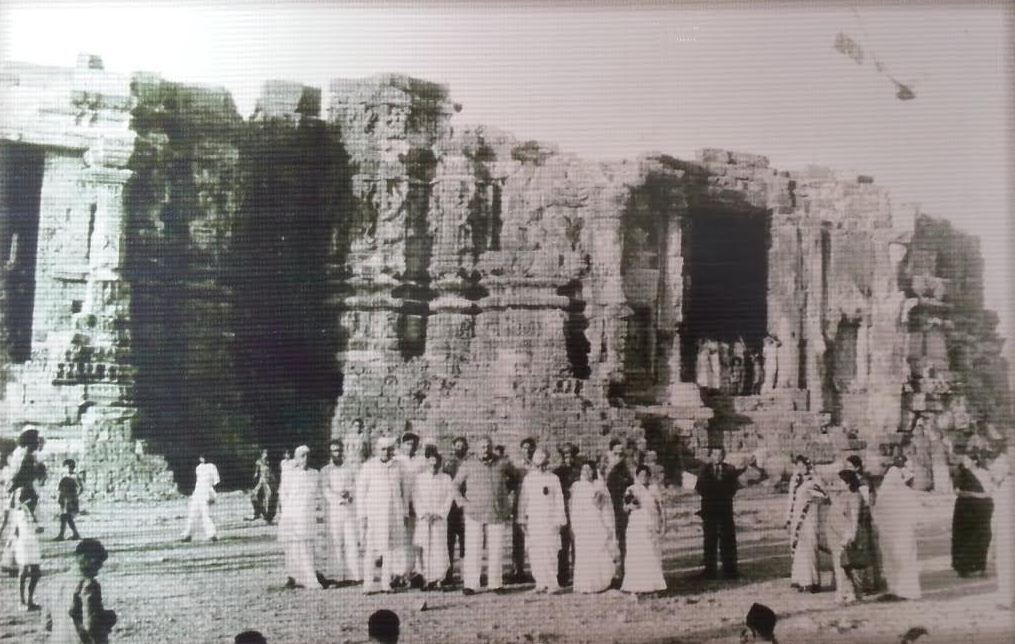
Junagadh State Administrator further press for preservation of old Somnath temple as ancient monument and reconstruction of Somnath temple on another site
Letter from Junagarh States Administration House, Junagarh to NM Buch, Regional Commissioner, Western India and Gujarat State Region on 14.2.1948:
I enclose a note on the proposal to reconstruct the Somnath Temple. We feel rather strongly on the subject. I should be grateful if this view is brought to the notice of the Somnath Temple Reconstruction Committee which I believe is being appointed to suggest ways of reconstruction and also for disbursal of the funds that have been collected all over India. If the Somnath Temple has to be built it should be constructed as a new temple on another site and the old Somnath should be preserved as an ancient monument. I have seen a photograph of Somnath temple as it was 25 years ago. That picture shows that the temple had a good dome. This shows how within a short period of 25 years the dome has been withered away. The rate of erosion is therefore very fast and unless something is done quickly to preserve this monument by construction of a surrounding wall etc. we might lose a link to the glorious past of our architecture. If therefore it is approved at high level I shall have such a wall constructed enveloping the whole temple in order to preserve it.
We have appointed a Director of Archaeology here. He is one Mr. Pandya who is at present Director of Archaeology in Rajpipla State. He will be joining very shortly. He has already done considerable work in archaeology of Junagarh State. The recent accidental recovery of a temple under a mound in Patan indicates that large scale of excavation in Patan would lead to very important discoveries from the archaeological point of views. Excavations in Uparkot will certainly reveal a city. The work is of the greatest importance from the national point of view and I would suggest for your consideration that Mr. Wheeler, Director General of Archaeology in India may be asked to pay visit to Junagarh. He can then tour about with Mr. Pandya. It may be that Mr. Wheeler may like to undertake the excavations under the supervision of the Deptt. Of Archaeology of the Govt. of India.
(VV Baxi, Secretary to the Regional Commissioner sends the letter of 4.5.1948 and its enclosure from the Administrator(described above), Junagadh State to the Regional Commissioner for the information of the Ministry of States for supply of material for a reply on 19.5.1948.)
Sardar agrees for preservation of old Somnath temple but with installation of idol in it
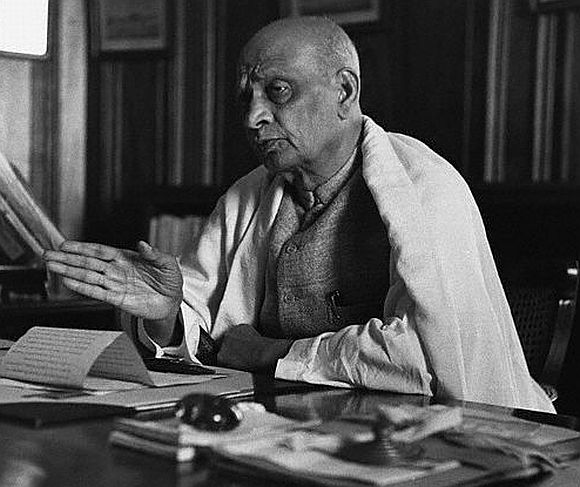
For once, Sardar Patel agreed to preserve the old Somnath temple but with condition attached that idol should be installed inside.
Ministry of States(led by Sardar Patel) letter on 8.4.1948
H.M.(Home Minister Sardar Vallabhbhai Patel) agrees that old Temple should be preserved as a monument but a suitable idol should be placed with the temple, steps should be taken to ensure that the building is not further damaged, and the access etc. and surroundings of the temple should be improved. H.M. would be glad to know if the D.G.A has any proposals in this regard and if so what they are.
H.M. also agrees that an officer of the Deptt. should visit Junagarh as desired by the Administrator.
Wheeler hails Patel’s decision to preserve old Somnath temple under Archaeological Department

Mortimer Wheeler was heading Archaeological department of Government of India at that time. He was for preservation of Somnath temple as protected monument. He was glad that Sardar Patel had agreed to the suggestion that old Somnath temple should be preserved.
DGA Mortimer Wheeler’s letter on 21.4.1948
I warmly welcome the decision of the H.M. that the famous temple of Somnath should be preserved by the Central Archaeological Department, and have arranged for the Deputy Director General of Archaeology to visit Somnath on the 7th May (by arrangement with the Administrator) to make a preliminary report.
R.E. Mortimer Wheeler
D.G.A.
Hindu Mission, Calcultta inquires about no progress, offers help
Some organization called Hindu Mission in Calcutta wrote a letter to inquire about no progress on reconstruction of Somnath temple and installation of deity and offered its help.
Copy of letter dated 26 April 1948 from the Joint Secretary, Hindu Mission, Calcutta to Administrator of Junagadh State:
We are highly interested in the reconstruction of the Somnath Temple and eager to help the reconstruction and the installation of the Deity. So far as we read in Newspapers, Sardar Patel took great interest in the matter and we think a Committee was set up to do the work, but nothing is heard about the progress for a long time. Please let us know in details or forward this letter to the proper quarter for a reply.
Please also let us know if we can be helpful to the reconstruction of the Temple and the Re-installation of the Deity in any way.
Thanking you very much in anticipation.
Archaeological expert after ground survey recommends not to convert old temple into religious use
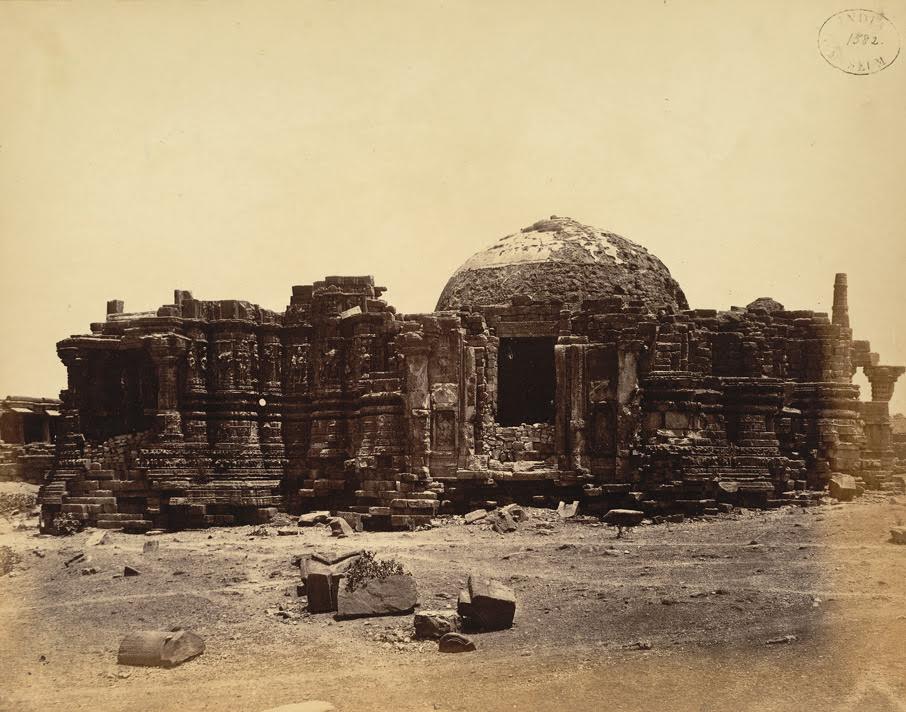
Archaeologist deputed by Government of India in his report after site visit and survey recommends the government that the shrine should not be converted into religious use as rush of pilgrims would result into speedy decay of dilapidated structure.
Secretary of Regional Commissioner, Rajkot to the deputy Secretary to Govt of India, Ministry of States, New Delhi in March/April 1948:
In accordance with the arrangements made, the Deputy Director General of Archaeology in India visited Prabhas Patan and Somnath during the first week of May 1948. A copy of report prepared by him is enclosed
One of paras in report: ‘The shrine should not be converted into religious use as concourse of people coming from all parts of India and rushing through the dilapidated structure will contribute to its speedy decay.’
The report sought two years time and Rs 67,000 budget for conservation work.
Junagadh Administrator for preservation of old Somnath temple as historical monument, not religious
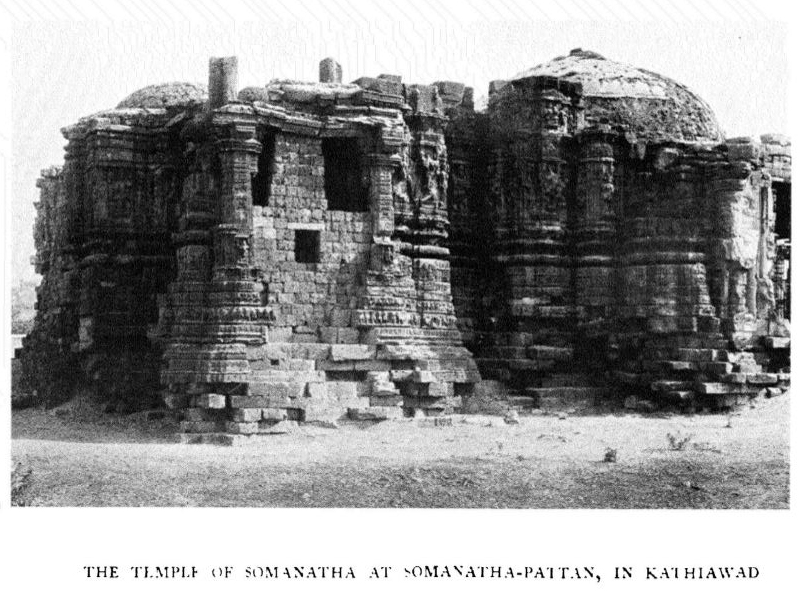
Administrator of Junagadh State again writes a letter and presses for preservation of old Somnath temple without deity, considering it as historical monument and not religious one. Administrator in order to further strengthen his point also argues that if deity is installed in old temple and crowds of Hindu visit it regularly, the protection job will be difficult for Archaeological department. The administrator also points out that if a separate Somnath temple is going to be built, there’s no point in duplicating the deity.
Administrator of Junagadh State forwards the copy of Hindu Mission letter(above) along with following note on 4th May 1948:
I enclose copy of a letter I have received from the Hindu Mission, Calcutta, regarding the reconstruction of the Somnath temple. In this connection so far as I could gather in New Delhi I believe that the Government of India have now come to the conclusion that the old Somnath temple should be preserved as it is as an ancient monument under the care of the Director General of Archaeology, Government of India. You are already aware that for this purpose Mr. Srivastava, Depity Director General of Archaeology is visiting Junagadh and Somnath on the 6th May. If the new temple is to be constructed it will be constructed on a separate site. I however did hear that there is a proposal in New Delhi for putting a deity in the old Somnath temple. My own feeling in the matter is rather strong, namely, that we should definitely not have a deity in the old temple. My reasons are –
(a) being an ancient monument under the Director of Archaeology it should be a monument in which all people in India should take pride whatever their religion or creed. It should be regarded as a historical monument rather than a religious monument and therefore any attempt to revive it as a religious place of worship should be discouraged to the utmost. Besides if a deity is installed crowds of Hindus will make pilgrimage to the place and it will be very difficult for the Archaeological Department to protect the monument from wear and tear caused by such visitors who in their religious fervour might take any advice amiss. The pillars of the monument are rather weak and may not stand the straign of huge throng of people trying to shove themselves in,
(b) If a separate Somnath temple is going to be created there is no point in duplicating the deity.
I shall be grateful if you will kindly have the matter clarified from the Government of India and also to know the lines on which I should reply to the Hindu Mission.
Archaeological department requests Sardar to reconsider idol placement proposal in old temple
Archaeological department led by Wheeler while earlier welcomed Sardar’s nod for preservation of old Somnath temple with installation of idol inside, now in this letter differed on the idea of idol installation. The department in agreement to the Administrator of Junagadh State(a Britisher) that old temple should be preserved without deity inside.
Department of Archaeology’s letter on 17.6.1948
I entirely agree with the views of the Administrator, Junagadh State, that the old temple should be preserved as it is by the Archaeological Survey as an ancient monument and also that no deity should be installed in it. It would have been a different matter if the old diety had been preserved and the monument continued as a living place of worship. I would, therefore request that the question of placing a deity in the old temple may kindly be reconsidered by the Deputy Prime Minister. All the reasons given by the Administrator in the second paragraph of his letter are very cogent and have the support of this Department.
N.P.Chakravarti
Ministry of Education asks Sardar’s ministry to see to the point of preserving old temple without idol
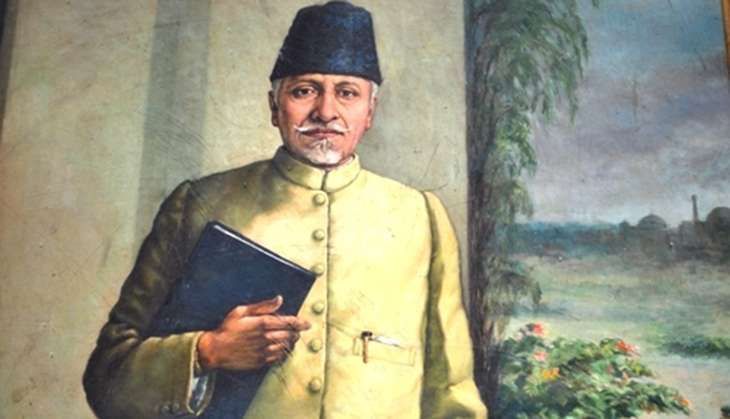
After Junagadh Administrator and Archaeological Department, now Ministry of Education also agreed to the point that the old temple structure should be preserved without idol inside. Education Ministry asked Sardar Patel led States Ministry to see to this point.
Ministry of Education’s letter on 21.6.1948
We may agree generally with the D.G.A’s views expressed in his note above. Secretary may also see before these papers are returned to the Ministry of States.
‘A’ above has aleady been agreed by Honorable Minister for Education and the Ministry of States. The letter’s view was that a suitable(new) idol should be placed in the old temple, but the D.G.A. considers no deity should be installed in this old temple. He is supported in this view by the Administrator of Junagadh State, and this Ministry accepts this now. The Ministry of States may see on this point.
Department of Archaeology seeks prompt handover of old temple for preservation without deity in it
The Department of Archaeology, Government of India pressed again for handover of old temple without deity in it.
Department of Archaeology’s letter on 26.6.1948
I have already agreed in my u.o. dated 17.6.1948 to the preservation of the temple as it is without installation of deity in it. The Temple may now be formally transferred the charge of this Department if necessary by an executive order. The position of this Department vis-a vis the Junagadh State may also be defined at the same time, for I presume, the Ancient Monuments Preservation Act will not automatically be applicable to the territory, and since full responsibility for preservation and maintenance of the temple in question is being assumed by the Central Government it is desirable at the very outset to make necessary arrangements for the proper discharge of that responsibility.
N.P.Chakrvarti
Ministry of Education seeks clarity from Ministry of States regarding handover of old temple
Education Department of Government of India presses for transfer of old Somnath temple to Archaeological Department.
Ministry of Education’s letter to Ministry of States on 8.7.48
It is obvious from the D.G.A.’s note above that the Somnath temple has not yet been taken over by the Archl. Deptt. from the Junagadh Government. H.M. for States have already consented to the preservation of this temple as an ancient monument by the Archl. Deptt. Whereas the A.M.P. Act of 1904 has not yet been extended to the acceded states and the position of the Archl. Deptt. vis-a-vis Junagadh is not clear, the states Ministry may be requested to advise us in regard to the proposed transfer of the Somnath temple to the Archl. Deptt.
R.Lal
Ashfaque Husain
Ministry of State says reconstruction to take place by a Board of Trustees
Sardar’s Ministry makes it clear that a Board of Trustees will work for reconstruction of the Somnath temple.
Ministry of State’s letter to Ministry of Education in March 1949:
A Board of Trustees is going to be created shortly for the work of reconstruction of the Somnath Temple. It has since been decided that it is no longer necessary for the Temple or any land in Prabhas Patan to vest in the Government of India. The Temple and the land which are now in the jurisdiction of the Government of Saurashtra(Junagadh having merged) will later vest in the Trustees.
Have a look at original documents mentioned in this article
Munshi on decision to replace old structure with new

Kanaiyalal Munshi who along with Sardar Patel played a key role in rebuilding the Somnath temple writes in his book Somnath the shrine eternal:
In the beginning, some persons, more fond of dead stones than live values, pressed the point of view that the ruins of the old temple should be maintained as an ancient monument. We were, however, firm in our view, that the temple of Somanatha was not an ancient monument; it lived in the sentiment of the Whole nation and its reconstruction was a national pledge. Its preservation should not be a mere matter of historical curiosity. Some of my scholar friends had hard things to say about me, for my ‘vandalism’. They forgot that I am fond of history, but fonder still of creative values. When the question was pressed by the Archaeological Department, Sardar expressed his views as follows :- “… The Hindu sentiment in regard to this temple is both strong and widespread. In the present conditions, it is unlikely that, that sentiment will be satisfied by mere restoration of the temple or by prolonging its life. The restoration of the idol would be a point of honour and sentiment with the Hindu public.”
At that stage it was considered that the restoration of the idol would not interfere with the maintenance of the old temple. The specialists, on scrutiny, found that the ruins were salt-eaten and irreparable, nor could they support a new shikher. Religious injunctions also stood in the way of installing the deity in ruins which could not be renovated as prescribed. It was, therefore finally decided to rebuild the temple.
On January 23, 1949, a conference was held at Jamnagar attended by Sardar and Shri Gadgil with Jam Saheb, Uchhangrai Dhebar, Chief Minister of Saurashtra, and Samaldas Gandhi, Administrator of Junagadh. The Trust, it was then decided, was to consist of two representatives of donors, two eminent public men, two representatives of the Government of India, and two representatives of the Government of Saurashtra Union (of whom one would be from Junagadh). The Board of Trustees were to be assisted by an Advisory Committee the composition of which was to be settled by the Government of India.
The objects of the Trust were to include ‘not only the rebuilding‘ and the maintenance of the Somanatha Temple itself and its auxiliary institutions, the renovation of Dehotsarga where Lord Shri Krishna parted with His body, but also the general improvement of the neighborhood so as to restore its atmosphere of sanctity.’ I was instructed to prepare the Trust Deed. My view was that a temple by itself would not be enough in these days of cultural resurgence, nor did the authoritative tradition of a great temple permit its dissociation from a centre of learning. If the temple was to be a real centre of attraction for the country, it should have close association with an All-India Sanskrit University.
On February 15, 1949, the State Ministry issued a directive that it was no longer necessary for the temple or any land in Prabhas Patan to vest in the Government of India. The temple and the land which were then in the jurisdiction of the Saurashtra Government (Junagadh having merged in the meantime) and such property rights as were considered necessary for the proper fulfillment of the Trust, would later vest in the Trustees. The draft Trust Deed, which required considerable amendments, was directed to be sent back to me. The objects were specified in the direction as not merely to restore and reconstruct the temple and the idol, but to improve the surroundings and set up such institutions as may restore the sanctity of Prabhasa Patan and its surroundings. This was to include the construction of rest houses for the pilgrims and setting up of educational institutions for Sanskrit. The Trust was also to attend to the restoration of places like Dehotsarga-the place where Shri Krishna cast off His body. It was also directed that the Government of India as such would not finance the reconstruction, but could have representation on the Trust. Soon after, I prepared the draft Trust Deed. The Advisory Committee appointed by the Government of India consisted of C. M. Master, Architect; J, C.Ghosh; Prabhashankar O. Sompura, one of the hereditary architects of Somanatha; U. J. Bhatt, Chief Engineer of Saurashtra Government; B. S. Vyas; G. B. Deolalikar, Consulting Architect of the Central P.W.D.; S. K. Jog1ekar, Town Planning Officer of the C.P.W.D.; with myself as Chairman and N. P. Chakravarti, then Director-General of Archaeology, as Convenor. We started working on July 30, 1949. Under our instructions, Prabhashankar Sompura, with his wide knowledge of the ancient art of temple building, prepared a plan of the new temple on the style of the old one. On October 18, 1949, Sardar nominated the first Trustees. Jam Saheb and Samaldas Gandhi were to represent Saurashtra Government. Gadgil, Minister for Works, Mines and Power, and D. V. Rege, Regional Commissioner of Saurashtra at Rajkot, were appointed as nominees of the Government of India. Brijmohan Birla and myself were appointed as representatives of the general public. Two vacancies were kept for future donors. Though not officially a Trustee, U. N. Dhebar, Chief Minister of Saurashtra, has been more than a Trustee, aiding, guiding and implementing all the activities of the Trust with rare conscientiousness.
Archaeology department’s version on decision to replace the old structure with new

Department of Archaeology letter(May 1951 by Madho Sarup Vats)
During his visit to Somnath the late Sardar Patel pledged to renovate the temple and restore it to its past glory.
Mr. H.L. Srivastava, the then Dy. D.G.A. who had previously visited the temple in 1948, reported about its dilapidated condition and suggested measure for its conservation including chemical treatment. Dr. Chakravarti, the then D.G.A. suggested that in case it was decided to rebuild the temple in pursuance of the appeal issued by the late Sardar Patel, it would be necessary to get correct advice in the following points:-
1. If there is any danger of the advancement of sand within the temple premises.
2. Whether the temple could be rendered safe from the action of salt by proper treatment.
3. Which parts of the existing structure belong to the original temple which was destroyed by Mahmud of Ghazni.
4. Whether the foundation of the temple is solid and has not subsided making the whole edifice dangerous and whether there is any erosion caused by subsoil water.
5. Whether from the information at our disposal it is possible to rebuild the temple, and it so whether the old remains, even if repaired, will be able to carry the load of the new structure.
Following his suggestion, an Advisory Committee on Somnath Temple was constituted. The committee in its first meeting held in New Delhi on 30th July, 1949 requested two of its members, viz. Mr. C.M. Master Chartered Architect, and Mr. U.J. Bhatt, Chief Engineer of the Government of Saurashtra, PWD, to report the points raised by Dr. Chakravarti.
They visited the temple and, among other things, reported that the …. had so badly corroded that unless the whole building was taken down it was not possible to restore it to its original condition.
They therefore recommended that the proposed temple should not be built in the place where it was, but should be constructed further to the north of the existing ruins which might be preserved as an ancient monument.
Later on, I learnt from the Hon’ble Shri K.M.Munshi that the question of preserving the old temple of Somnath such as it existed was given up on grounds of religious sentiment.
I, however made it clear to him as well as to Mr. Bhatt that this Department could not, in any case, be a party to the wholesale removal of the garbhagriha or other parts of the ancient Somnath temple nor to its renovation, and that if religious sentiment compelled such a course of action, that was bound to be viewed with disapproval in archaeological circles.
The temple being not a protected monument, this Department was never charged with its preservation. The development of the site as proposed by the signatories of the petition is not the concern of this Department. If necessary, the petition may be sent to the Board of Trustees under whose auspices the new temple is being built for such action as they consider necessary.
The help of this Department was sought in excavating the lower levels of the temple and its precincts with a view of finding out the earlier lay-our of the temple Mr. B.K.Thapar was deputed for the purposes last year and his work, carried out on strictly scientific lines, has been approved by all concerned.
Related Stories
PM Modi to lay foundation stone for construction of Parvati Mandir in Prabhas Patan
In pictures: PM Modi to dedicate Somnath Exhibition Gallery
Somnath Series: How Jawaharlal Nehru opposed President Rajendra Prasad's decision to attend Somnath ceremony
Nehru had asked I&B minister to tone down the description of Somnath Pran Pratishtha ceremony in radio broadcast
Somnath Series: When President Rajendra Prasad presided the installation ceremony of Somnath Shivalinga
Somnath Series: Mahatma Gandhi's centrist stand on Somnath temple restoration
Somnath Series: Historic visit by Sardar Patel, Gadgil, Jam Saheb that paved the way for reconstruction of ruined Somnath temple
#SomnathSeries : Ruined and ravaged Somnath temple as described by visitors in 19th and 20th centuries
#SomnathSeries : The last destruction of Somnath temple and Gujarat under Aurangzeb
Recent Stories
- Surat Congress candidate Nilesh Kumbhani's nomination form facing invalidation procedure
- ACB Gujarat decoy traps private hospital's staffer for bribery
- Chaitar Vasava has 13 FIRs against him under over 30 IPC sections in 3 police stations
- WR to run 2 pairs of Sabarmati-Barmer Special trains for summer
- ACB Gujarat files offence against SK Langa and son for disproportionate asset
- Kshatriya agitators announce part-2 programs in Gujarat
- FM Sitharaman on Gujarat visit
